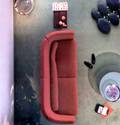
Feng shui and architecture
A great part of Feng Shui lies in having good design, but interesting architecture will sometimes get in the way of this since Feng Shui depends upon how Chi moves in and around a building and the effect that this has upon people. There are seven principles that this will affect and thus it is important to consider each of these principles individually.
1. There are many floor plans in which architects will intentionally place doorways or windows directly opposite of one another. Some architects may line an entire wall with windows. Whenever a person looks at any of these designs, their symmetry is obvious. This symmetry is neither harmonious nor balanced whenever it is considered by a Feng Shui practitioner. While windows or doors that are placed precisely opposite of one another may feel like good symmetry due to a designer’s training, in Feng Shui practitioners learn that such a design allows for Chi to move too quickly through the room or leak its vitality.
2. High ceilings may be intended to make a room feel dramatic and larger but in Feng Shui there are times when high ceilings are not good. Of course most people will initially feel good in this type of a room but in certain events these same people will eventually notice that they are having problems concentrating or sleeping. It simply all depends upon the room’s function. There are times when the good energy which is necessary to create coziness within a small room will be dissipated by high ceilings.
3. Exposed beams. Many architects believe that this is an easy way to bring personality into a room. However, according to Feng Shui, exposed beams that are located within a bedroom will cause health and relationship problems.
4. Architects realize that a major selling point for a lot of homes is the fact that there is a great view from the entrance leading all the way through the back of the house where you are able to see a garden, valley or ocean. Nevertheless, Feng Shui practitioners will never buy such a home since they believe that incoming energy will go directly to the back of the house and straight out of the window. This will result in the home’s occupants having a difficult time saving their money.
5. Whenever an architect places angles or odd shapes into a single room (the room is not a square or rectangle) Chi will boomerang around the room. This will cause a lack of focus, ill health, and arguments. Here it is important to remember, and understand, that just because a building may be good for money, they are not necessarily good for health and/or relationships. If you must choose then your priority should lie in the area of people, not money.
6. Architects often create big, spiraling staircases which they feel will make a huge statement within a room. In Feng Shui, such staircases will cause energy to swirl around, activating anything near it. Thus, if this type of a staircase is located within a positive part of the building then it will make that area even more positive. However, if you have this type of a staircase located in a negative area then the movement that it will stir up will only further aggravate that area.
7. An architect may design a home or commercial property which looks and feels wonderful. All of the visual features may even be in total sync with good Feng Shui principles, yet it is still important to remember that every structure is built facing a certain compass degree and within a specific time frame. Together these two coordinates may produce a building structure that can attract great adversity even though it “looks” good. This is the part of Feng Shui that architects find the most annoying. They simply cannot understand how their elaborate building design can create lawsuits, or problems with health or within a person’s family or love life.
The good news is that today an increasing number of architects are considering working with Feng Shui practitioners so that together they can blend their talents to create visually, functionally and energetically advantageous spaces.